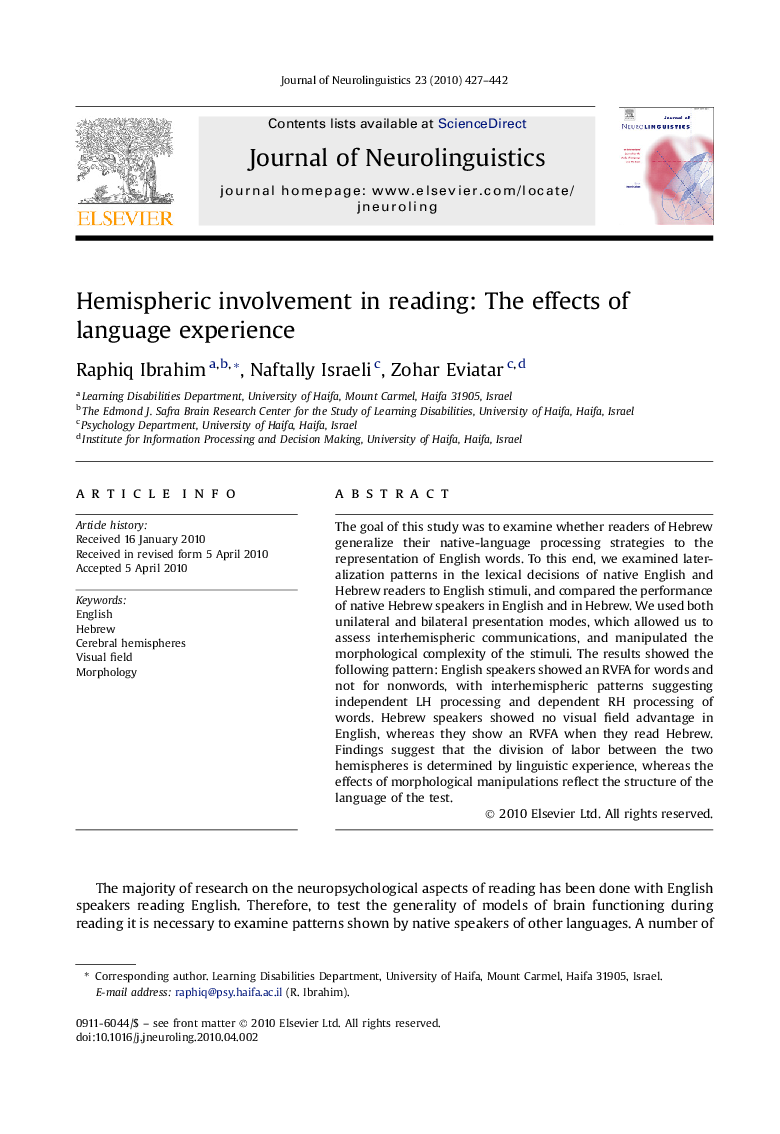| Article ID | Journal | Published Year | Pages | File Type |
|---|---|---|---|---|
| 911885 | Journal of Neurolinguistics | 2010 | 16 Pages |
The goal of this study was to examine whether readers of Hebrew generalize their native-language processing strategies to the representation of English words. To this end, we examined lateralization patterns in the lexical decisions of native English and Hebrew readers to English stimuli, and compared the performance of native Hebrew speakers in English and in Hebrew. We used both unilateral and bilateral presentation modes, which allowed us to assess interhemispheric communications, and manipulated the morphological complexity of the stimuli. The results showed the following pattern: English speakers showed an RVFA for words and not for nonwords, with interhemispheric patterns suggesting independent LH processing and dependent RH processing of words. Hebrew speakers showed no visual field advantage in English, whereas they show an RVFA when they read Hebrew. Findings suggest that the division of labor between the two hemispheres is determined by linguistic experience, whereas the effects of morphological manipulations reflect the structure of the language of the test.
